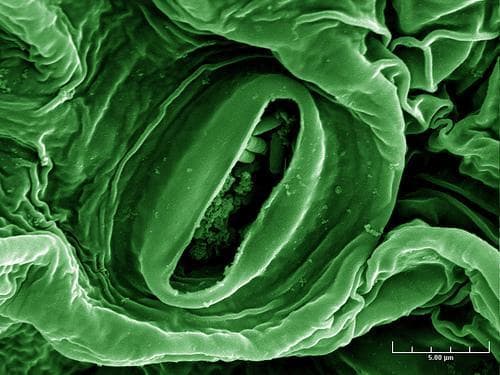Advertisement
Six Facts About E. Coli From A Food Safety Litigator

The German E. coli outbreak has now killed at least 23 people and sickened more than 2,300 others — including one person from Massachusetts, who recently traveled to Hamburg, Germany and is confirmed as having a strain that matches the German type, according to the CDC.
Officially called "Shiga toxin-producing Escherichia coli O104:H4" or "STEC O104:H4," the current outbreak is scary because of its virulence: a large number of victims have developed hemolytic uremic syndrome, a.k.a., acute kidney failure.
U.S. public health and regulatory authorities say that so far, there's no indication that any of the potential sources of the outbreak — raw sprouts, tomatoes, cucumbers and leafy salads from northern Germany — have been shipped here from Europe. Still, I decided to do an E. coli reality check with Bill Marler, a plaintiff's lawyer based in Seattle, who specializes in food-borne illness cases. Marler made his name back in the early 1990s, winning a $15.6 million settlement on behalf of a little girl sickened by a Jack In The Box hamburger. Since then, he has been involved in every major E. coli case in the country. He's got no formal scientific training, as far as I know, but the guy is pretty savvy about this little bacterium.
I asked Bill if this strain is unique. Here, condensed and edited, is what he said:
1. This Particular Strain Hasn't Been Seen Before, But Others In The Family Have Been Around
In the U.S. the most widely seen strain is E coli O157:H7 — that's the strain behind the so-called "Jack In The Box" outbreak, and the 2006 spinach outbreak. For a little background: there are billions of E. coli bacteria in your body at any given time, and most are benign. Only a handful cause human disease. In Europe, they've seen more of the non-0157 varieties than we see in the U.S. — possibly because they are more prevalent, possibly because they test more. Here in the U.S., however, there have been outbreaks involving this subfamily: In the 1990s milk in Montana was found to be tainted, as well as hamburger tested in 2009.
2. Not Likely A New Superbug
There is definitely cause for alarm here: the strain hasn't been seen, the death toll is high and likely will grow higher and a lot of people are suffering from kidney failure (about 28 percent, Bill says). But, he says, "it shouldn't come as a surprise to the government or industry." These pathogens have been around before and "probably what's happening now is not some new Superbug. It's just a nasty, more virulent subspecies coming forward."
3. Antibiotic Resistance Is A Red Herring
I've heard a few ominous news reports stating that the current strain is antibiotic-resistant. Well, Bill says that many strains are antibiotic-resistant. In fact, he says, you can't treat people with E. coli like this with antibiotics because it may kill the bacteria but release all the toxins immediately. This, as you might imagine, causes even greater problems. The virulence of the German strain could simply be "the evolutionary way this particular bug has grown. They get more or less virulent as they go along."
4. It's Especially Bad For Women
When the outbreak was first detected, the German version of the CDC, called the Robert Koch Institute, interviewed victims. They soon determined that about 85% had consumed some kind of salad ingredients, specifically, cucumbers, tomatoes, lettuce, sprouts. So who eats salads? Women. And in fact, Bill says, the vast majority of those sickened and almost all of the dead are women. "Women tend to be more salad-eating then men," he said.
5. Even Without The Specific Culprit, They've Got The Culprit
The most likely source is salad ingredients, Bill says, but it may be impossible to precisely pinpoint the specific source.
"In my view, they've already found the source - salad ingredients - but to parse out what's in the salad becomes more difficult as time goes on," he said. "Product is gone - it's perishable - people ate it and got sick or it got turned into cattle feed. The longer these things tend to go on the harder to find the source," he said. One thing though, if he was traveling in German, he wouldn't eat any salad. "Nothing that you couldn't cook."
And as for the source of the contamination, we will likely never know. E. coli is a fecal bacteria, generally found in the guts of cows, but also pigs, sheep, goats and other animals. "But if you were a betting person you'd bet it was a cow," Bill said. So fecal matter must have gotten on some component of the produce, but whether it was through contaminated water, improperly composted fertilizer or wind-blown from a dairy farm to a lettuce field is anyone's guess. "Unfortunately, with most outbreaks, you never find out how."
6. Outbreak May Have Peaked
Bill says many outbreaks follow a similar curve, and that this one has probably peaked. Still because many of the cases were secondary cases, that is caretakers or family members who came in close contact with sickened victims, the death toll will likely rise, he said. "It only takes about 50 bacterium to sicken you and 100,000 fit on the head of a pin," he said.
Note: Updated to underscore that Marler is a litigator, not a scientist.
This program aired on June 7, 2011. The audio for this program is not available.
